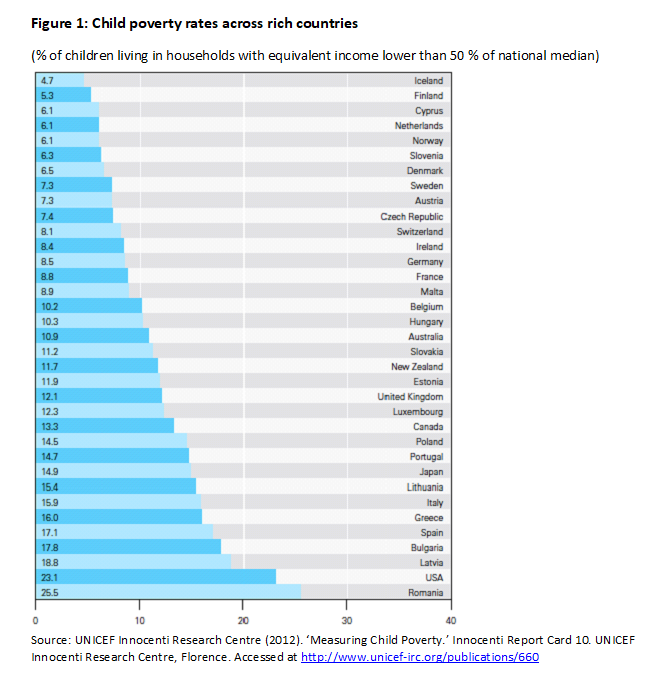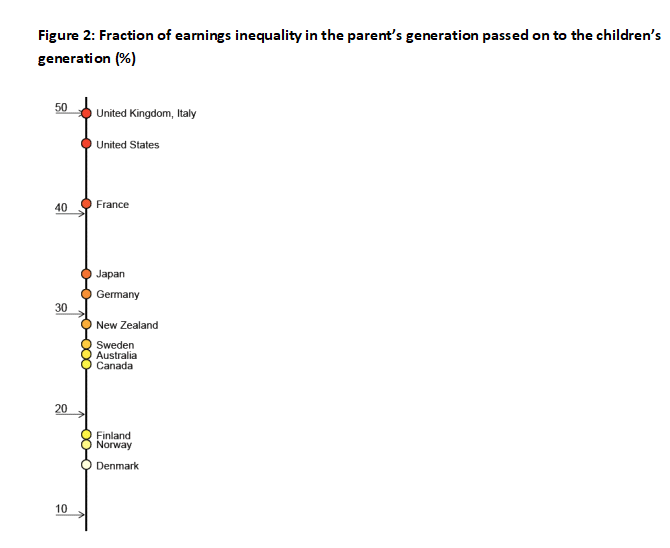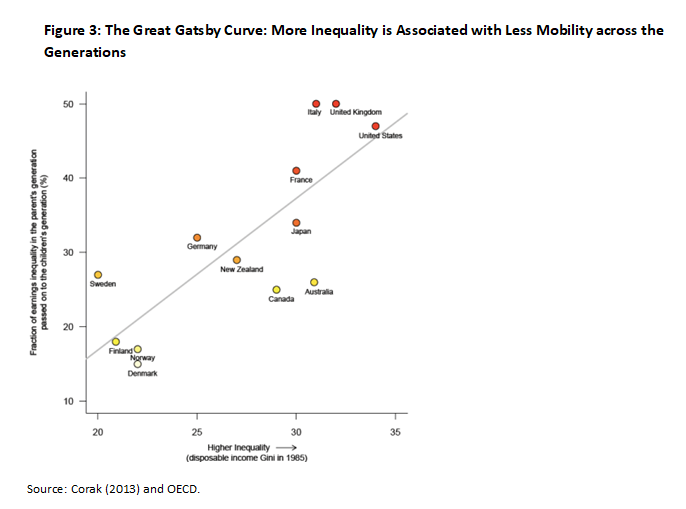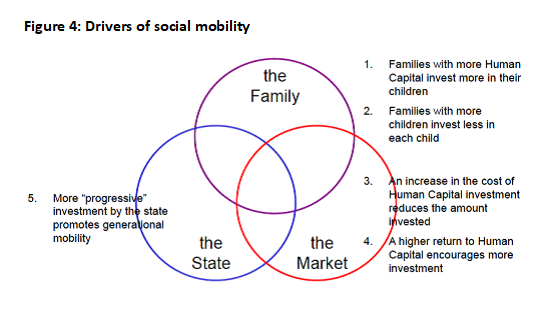Issue, No.8 (December 2018)
Building a more inclusive society
What does inclusion mean, and how can we give it enough precision to inform public policy? In this article, I would like to elaborate further on the two facets of the term mean: mean in the sense of how we define inclusion, and mean in the sense of its implications for policy. My four major messages are:
- an inclusive society means that all children can become all that they can be;
- an inclusive society seeks to eliminate child poverty;
- income inequality has the potential to erode inclusion;
- public policy must address many dimensions of inequality.
What do we mean by social inclusion?
Social inclusion is a slippery term, and it certainly does not have a distinct meaning in the social sciences. Hence, it is difficult to frame implications for public policy, which might be beneficial for further developing our understanding of social inclusion in societies.
However, terminology matters greatly to public debate and public policy. For example, the term assimilation is used in some countries to refer to policies addressed to immigrants. It frames policy discourse in a way that leads to a focus on the shortcomings of migrants. There is a sense of a clear and distinct mainstream to society, or to the economy, and migrants are lacking in the skills, language, or even in the attitudes, religion, and culture necessary to fit into this mainstream. Thus, implicitly assimilation implies a need for migrants to change.
This is overtly clear in the way that some extreme groups argue against the very presence of migrants, or accommodations toward them. If this perspective rubs many of us the wrong way it is because at some level we recoil from the underlying assumption of assimilation: that the mainstream is clear, fixed, socially preferred; that the task for groups defined as the other—be they migrants, those with low-income or without work, those with physical or mental disabilities, or those of colour—is to adjust, to adapt, to assimilate, and indeed to ultimately identify with that mainstream.
It surely does not take much second thought to recognize that barriers to assimilation may be structural, reflecting overt discrimination in access to fundamental resources that are the basis for full participation in society: access to education, health care, income security, and even to jobs for which migrants may well be perfectly qualified but never hired because of skin colour, accent, or simply the spelling of their last names.
In other words, if perspectives like this rub many of us the wrong way it is because we believe there is a reciprocal obligation, something to be negotiated, something reflecting a partnership in the building of society in which all parties are treated with equal respect, and are in turn changed by the relationship.
This has to be at the core of what we mean by inclusion if it is to be a helpful framework. Inclusion embodies the idea that identity is something to be continually re-negotiated as successive waves of minority groups enter into conversation with the majority.
So in this way conversation is not just an excellent metaphor for the meaning of inclusion, it is also a vital mechanism to achieve it. It is through conversation that we can respectfully negotiate the terms of a partnership, but at the same time we appreciate conversation for its own sake, are not threatened or dissatisfied by the fact that it is open-ended, indeed this is what reassures and enriches.
But if building an inclusive society through conversation is to be sincere and productive, it has to be done between partners who demonstrate mutual respect, and be capable of freely engaging; partners with a clear sense of others, but also of themselves. It seems that this sort of capacity or capability is also at the core of what we mean by inclusion.
1. Children can become all that they can be
Amartya Sen argues that we should live in a society in which we all have the freedom to choose the lives that we value. An important prerequisite of this sort of freedom is having a fully developed sense of self, of capacities to define what we value, and to make the choices necessary to get us there.
In my view, when thinking in these terms it is natural to focus upon children. Certainly this is not the only way to think about Sen’s ideas, but I have to admit to being surprised that there is so little mention of children in Professor Sen’s amazing book Development as Freedom. Nonetheless, I would like to put the focus on children, and suggest that if a society is inclusive, it is in the very least a society in which children can become all that they can be.
Focusing on children also allows me to illustrate a framework for understanding the underlying drivers of inclusion, of the challenges facing societies seeking to be more inclusive, and of some public policy implications.
This definition implies that family background should not be destiny, that place and position in society should not echo excessively across the generations with today’s poor families raising children who will grow up to be the next generation of poor adults, or for that matter with today’s rich families raising the next generation of rich adults.
2. An inclusive society seeks to eliminate child poverty
A commitment to eliminating child poverty is a conversation worth having. In my view, there are two important dimensions of poverty worth keeping in mind. The first relates to basic needs and necessities—adequate resources to be able to procure food, shelter, and clothing. The second dimension is just as important and relates to relative deprivation—adequate resources to participate normally in society. E.g. a cell phone may have been considered a luxury a decade or more ago, but for the present day teenager it is a necessity.
Amartya Sen underscores this dual nature of poverty. If children are to become all that they can be, then they have a need for a certain relative standing in our communities, a standard of living that not only allows them to be fed, sheltered and clothed, but to also to participate fully in the society in which they are growing up.
To relate this idea to public policy advice, I suggest that we think of a family falling into poverty if it has less than half the resources of a family half way up the socio-economic ladder. In thinking of income poverty this would mean setting a poverty line at 50% of the median income appropriately adjusted for family size (see Figure 1 for cross-national divergence). It would also mean regularly updating this poverty line to reflect economic and social changes.

A society that seeks to eliminate child poverty might consider making a commitment of the following sort. Each government would commit to lowering child poverty below the level it inherited at the start of its mandate. This target would be defined as the poverty rate according to one-half of the median income in the year it assumed power.
Successive governments would face a similar commitment, but based upon a new poverty rate, that defined according to the new median income in the year it assumed power. In this way the poverty line would be continually updated as the median income changes, a reflection of the evolution in what it takes to participate normally.
3. Income inequality has the potential to erode inclusion
A conversation about poverty is implicitly a conversation about inequality in the lower half of the income distribution, and it makes the plight of the relatively poor a social concern. In this way more inequality in the lower half of the income distribution has the potential to erode inclusion. Furthermore, I would like to suggest that income inequality throughout the entire income distribution also has the potential to erode inclusion.

But first another clarification of terminology. A movement, both up and down the income distribution, without regard to family background is termed social mobility. Income inequality has the potential to erode inclusion because it puts social mobility at risk. To illustrate this, Figure 2 presents a ranking of some rich countries according to one measure of social mobility: the extent to which the adult incomes of sons are related to the incomes of their fathers. This degree of stickiness between parent and child incomes varies across the rich countries, with almost one-half of income inequality in one generation being passed on between fathers and sons in the UK, Italy, and the United States, but less than one-fifth in Finland, Norway, and Denmark. A middling rank in this overview is shared among countries like New Zealand, Sweden, Australia and Canada.
While intergenerational income mobility varies, it varies in a particular way. Figure 3 adds a second dimension to Figure 2. The horizontal direction plots countries from the least to the most unequal, according to the Gini coefficient that prevailed about a generation ago (around 1985). Figure 3 reveals that the greater the level of income inequality a generation ago, the lower the degree of mobility—that is the greater the chances that a child will occupy the same place in the income distribution as his or her parents. Greater inequality, in other words, tilts the playing field making it harder for children of lower socio-economic status to climb the ladder, and also more likely for those of higher status to inherit high status in their turn.

This relationship is often referred to as the Great Gatsby Curve, a name coined by the economist Alan Krueger. The Great Gatsby Curve raises a caution for our conversation about social inclusion. It suggests that the capacity to become all that you can be, will be more likely in more equal societies. To the extent that family income matters for life chances then the more unequal an economy, the less likely children will escape their family origins. High levels of inequality in a country seem not only unfair, but also erode equality of opportunity.
4. Public policy must address many dimensions of inequality
I have put the focus on differences in income, both in thinking about poverty and inequality. But as important as income is, it is not the only driver.

A child’s life chances are determined not just by inequality of money, but inequality of education and health care, inequality of experience and expectation, inequality of motivation and esteem, inequality of support and connections. So to fully appreciate the policy challenges it is important to appreciate that the underlying drivers of poverty, social mobility, and ultimately of capabilities and inclusion relate to the interaction between three important forces determining a child’s development: government policy, families, and labour markets.
We should never underestimate the major influence that families have on the well-being and development of children. But families must interact with the labour market, and rely on social policy for support and insurance. All children will be more likely to become all that they can be if their families have access to high quality care during their early years, access to high quality education from primary school to university, and access to health care throughout their lives.
Public policy plays an important role in complementing the efforts of families, and will contribute to social mobility if it is progressive, i.e. of relatively more advantage to the relatively disadvantaged. To a certain extent social mobility is a reality because social institutions and public policy have complemented the efforts of families in need in very important ways.
A more inclusive society
To conclude, it is promising to engage in a conversation about building a more “inclusive society” than we currently have. And to do so, I have suggested that we need to accept a definition of inclusion that refers to the full development of the capacities of children so that they are in a position as adults to live the lives that they choose to value. A more inclusive society—a society in which children can become all that they can be—will be a society in which the circumstances of birth matter less.
The original version of this articles is available at milescorak.com, and was presented as a keynote address to the A More Inclusive New Zealand Forum. You can follow Miles Corak @MilesCorak, or read more at milescorak.com.
